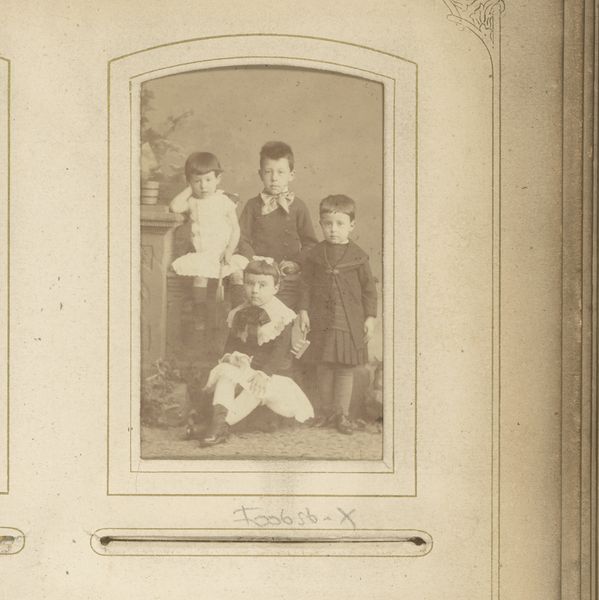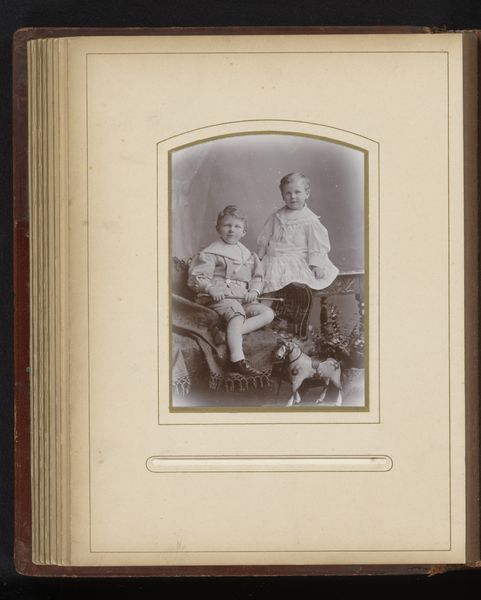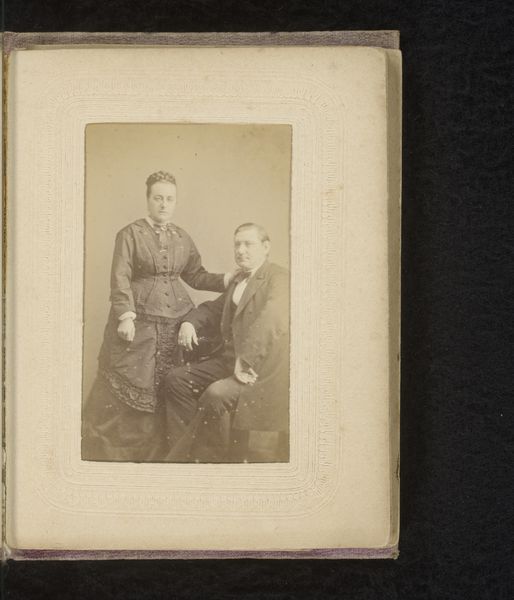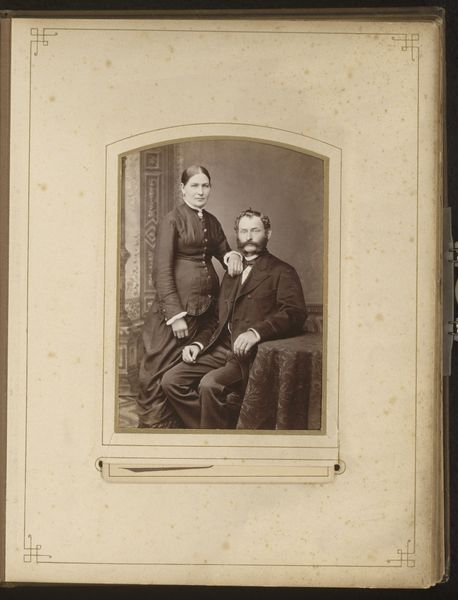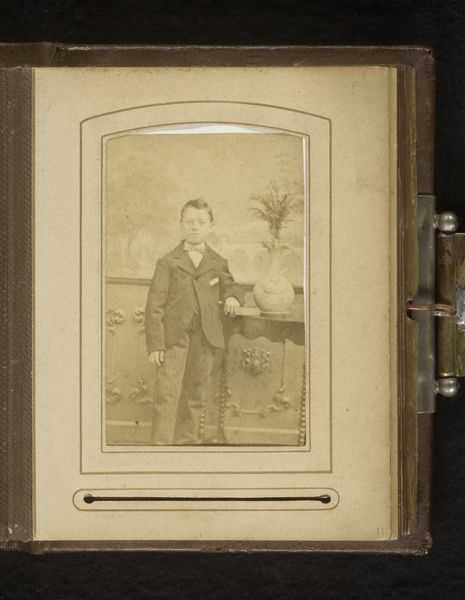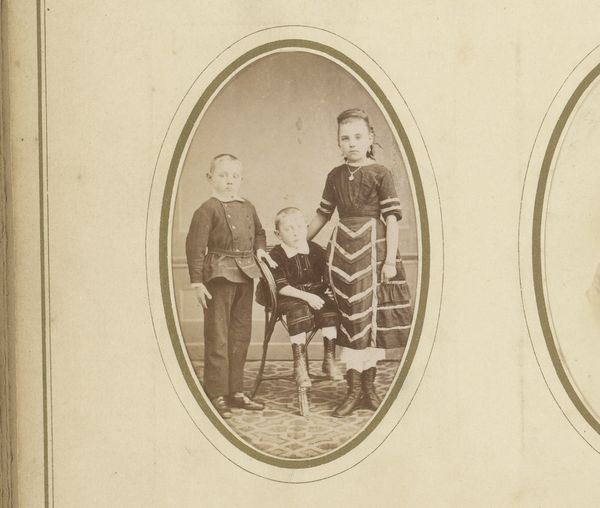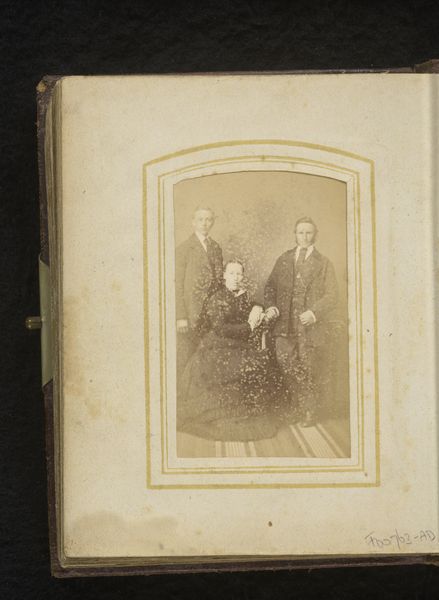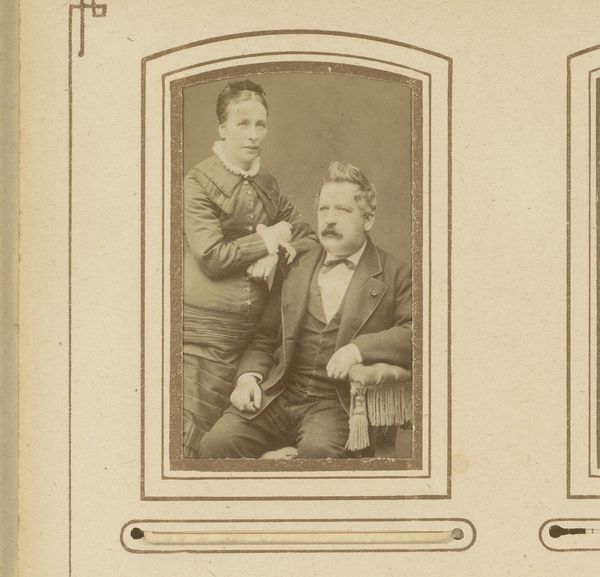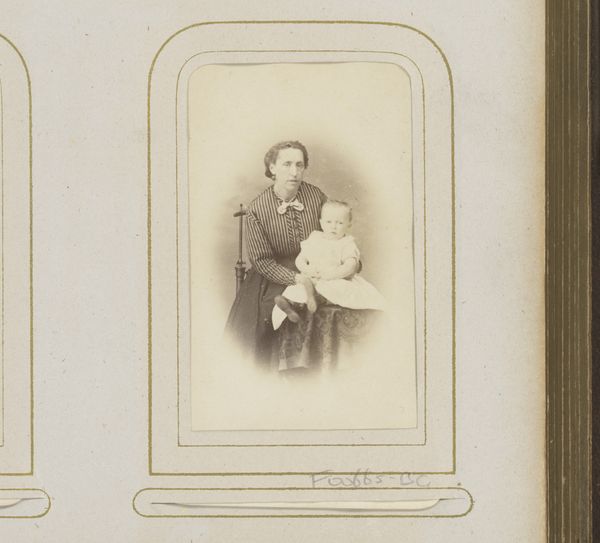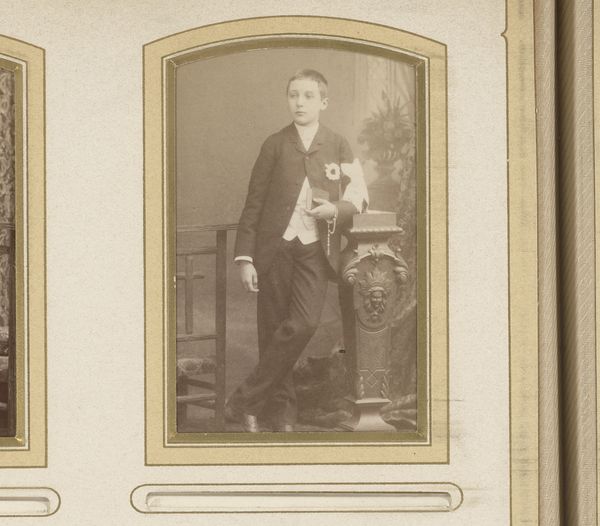
photography, gelatin-silver-print
#
portrait
#
charcoal drawing
#
photography
#
historical photography
#
gelatin-silver-print
#
genre-painting
Dimensions: height 83 mm, width 53 mm
Copyright: Rijks Museum: Open Domain
Willem Carel Heijenberg captured this photo of two boys and a dog sometime between 1835 and 1895. During this period, photography became a powerful tool for shaping societal perceptions, often reflecting and reinforcing existing power structures. Here, the attire of the boys suggests a certain class identity, hinting at the socio-economic status to which they belong. Their formal dress and the inclusion of a dog, a traditional symbol of loyalty and status, speaks to the values of middle class respectability during the late 19th century. The poses, which seem formal, also convey the subjects' self-awareness and how they wanted to be seen. How do these elements subtly communicate messages about identity and belonging? And how can we use the portrait to study the nuances of class, gender and social expectations in that time?
Comments
No comments
Be the first to comment and join the conversation on the ultimate creative platform.


